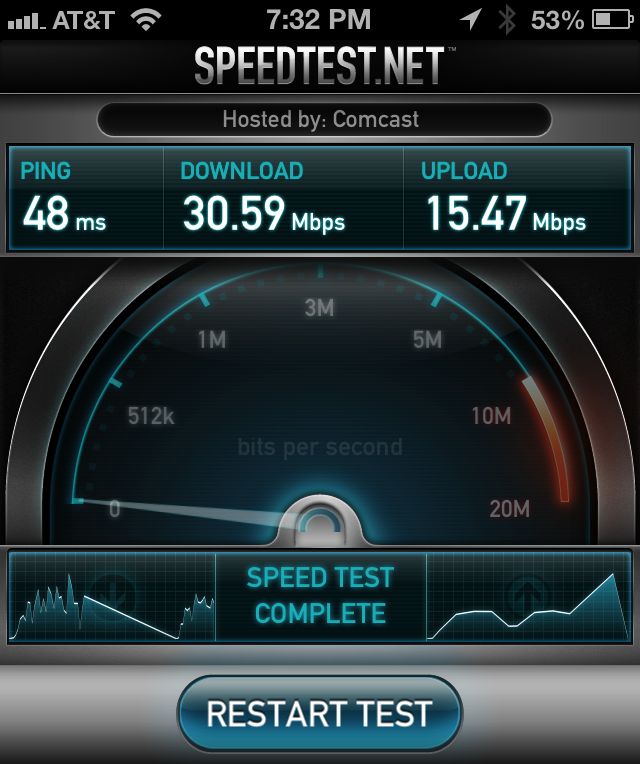
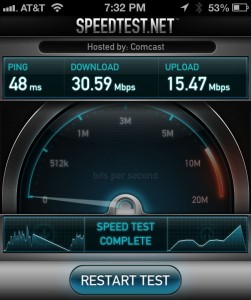
30+ Mbps downloads! 15+ Mbps uploads!
It really makes you feel like you are living in the future to be online on the go at speeds rivaling (and often besting) a suburban home cable modem.
Back when I first worked as a university network administrator in the early 90’s, the Internet backbone that ran through our machine room was shared by the entire Midwest, and it was barely any faster than this.
Now you can get these ridiculously fast speeds wirelessly, in your pocket!
At times, it seems downright miraculous.
And at other times – the glitches and connectivity issues can drive you mad!
But having spent the past few months experimenting with life in the 4G lane – we can confidently say that the time for 4G is now.
Warp factor 4, engage!
Our Updated Connectivity Arsenal
Over the summer we sought out some of the latest and greatest mobile tech to test out. Here’s the equipment we selected to take on a trial run:
- Millenicom’s 3G/4G Hotspot plan, featuring a Novatel 4620L MiFi.
- Wilson Sleek 4G-V from our friends at PowerfulSignal to boost Verizon 4G signals.
- WiFiRanger Go cellular / WiFi router from our friends at WiFiRanger.
To date, all these items have passed their audition with us, and they have earned their place as part of our primary tech arsenal. While all of the above where given to us for this review, we have no further financial or affiliate ties with any of the vendors or products above. And as you’ll read below, we devoted quite a bit of time and effort (beta!) testing and thoroughly reviewing the ‘free’ equipment we were sent.
The other recent change in our tech arsenal – we upgraded one of our iPhone 4’s to the new iPhone 5, and made a huge relationship leap by getting a ‘Mobile Share’ plan with AT&T to have always available data via a Personal Hotspot on our iDevices to give us a secondary data connection to compliment the Millenicom plan.
Follow this link to read more about our Mobile Internet Gadgetry, and read on to see how well all this new gear fit into our mix.
2G, 3G, “4G”, LTE, WiMax, OMG, WTH?
Cellular data connectivity has been evolving rapidly over the past decade, with an entire alphabet soup of technical standards and protocols behind the scenes pushing more bits faster with each new generation.
It is more than most mortals should need to worry about – so the carriers adopted “G” for “generation” to give a simple marketing shorthand for comparing wireless speeds. When you see terms like 2G, 3G and 4G – that’s all it means, 2nd Generation, 3rd Generation, etc. In general – 3G is faster than 2G, 4G is faster than 3G, and… wait, what is this new LTE thing???
Here’s a handy little infographic we created that will hopefully illustrate the evolution of cellular data technology a little better:
The Good Old Days
It used to be that there were two competing fundamentally very different wireless technologies – in the USA Sprint and Verizon used a technology called CDMA, and AT&T and T-Mobile and most of the rest of the world used an incompatible technology called GSM.
The third generation of CDMA technology was known as “EVDO”, and this was the first widely available wireless data standard that provided technomad-friendly speeds. When we hit the road in 2006, we relied on a Sprint 3G EVDO data card for years. It served us well, even though we were often actually happy to get 2G speeds in most places we roamed.
GSM networks were trailing at the time with 2G “EDGE” networks providing not much better than dial-up data speeds – fine for email, but painful for general surfing, and certainly not usable for video. But when the GSM networks evolved to 3G “UMTS” speeds, T-Mobile and AT&T leapfrogged ahead of CDMA’s EVDO 3G speeds.
The future was bright for GSM networks AT&T and T-Mobile – with a clear technological evolutionary path mapped out from UMTS to HSPA+ (3G+) to LTE (4G), with the network growing ever faster and able to handle increased user capacity. And as a global standard, the cost of LTE equipment would only get cheaper with time too.
CDMA networks on the other hand were at an evolutionary dead-end – there was no clear upgrade path for the carriers to anything beyond EVDO. Forging ahead would require a totally new investment in core cell tower technology.
The 4G Revolution
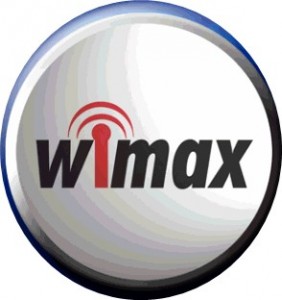 Sprint bet big on a 4G technology called WiMax and rushed to be the first to bring 4G service to market. Embracing WiMax as a successor to EVDO seemed like a reasonable bet years ago, but now it has become a clear mistake, and yet another dead-end.
Sprint bet big on a 4G technology called WiMax and rushed to be the first to bring 4G service to market. Embracing WiMax as a successor to EVDO seemed like a reasonable bet years ago, but now it has become a clear mistake, and yet another dead-end.
Verizon on the other hand predicted that the future was going to be LTE (aka – Long Term Evolution), and began aggressively building out the largest 4G LTE network in the United States.
Already being GSM based, AT&T should have had an easier time moving to LTE than Verizon, but AT&T let Verizon launch LTE before them and now AT&T has the second largest domestic LTE network and is playing catch-up.
Below is a screen capture from our little app, Coverage? – which overlays all of the carrier’s maps. We track these maps very closely on a regular basis. When comparing LTE to LTE – Verizon is clearly ahead:
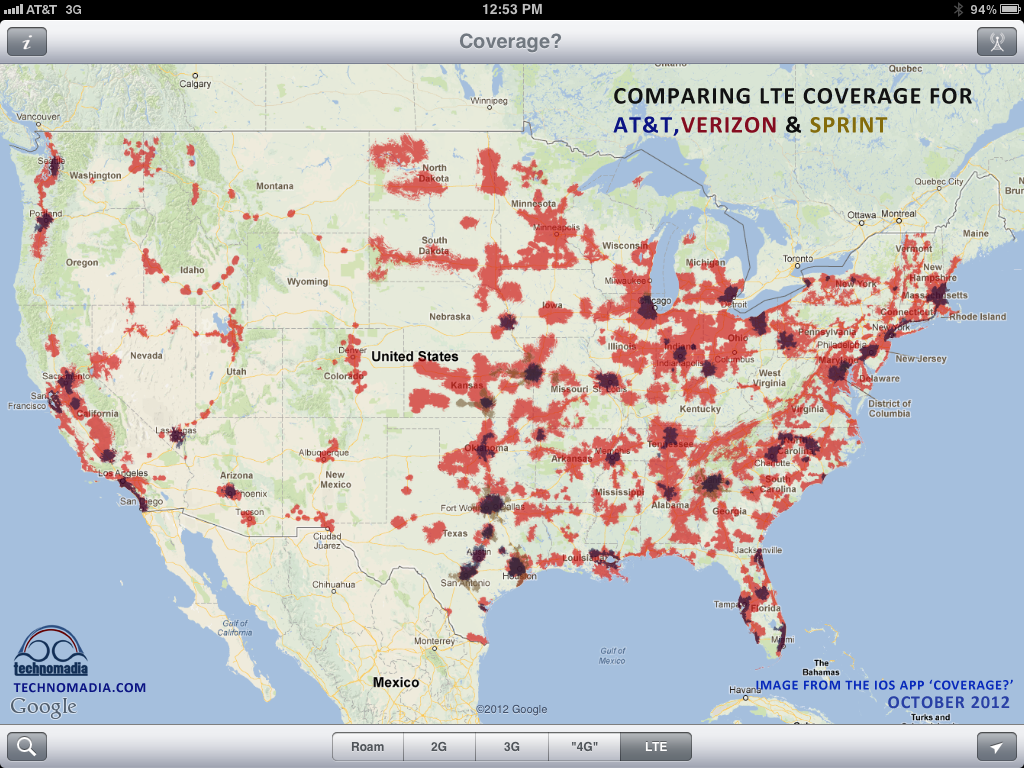
To combat Verizon’s lead and 4G LTE marketing push, last year both AT&T and T-Mobile decided to start marketing their HSPA 3G+ areas as “4G” – generating some criticism and lots of confusion.
But in practice, we’ve discovered that AT&T’s “4G” is always way faster than Verizon’s 3G, and sometimes in practice actually rivals and occasionally even beats Verizon’s LTE speeds.
And when you factor in this “4G” coverage area, suddenly AT&T’s network coverage jumps ahead of Verizon’s, as shown below when we compare 4G to 4G:
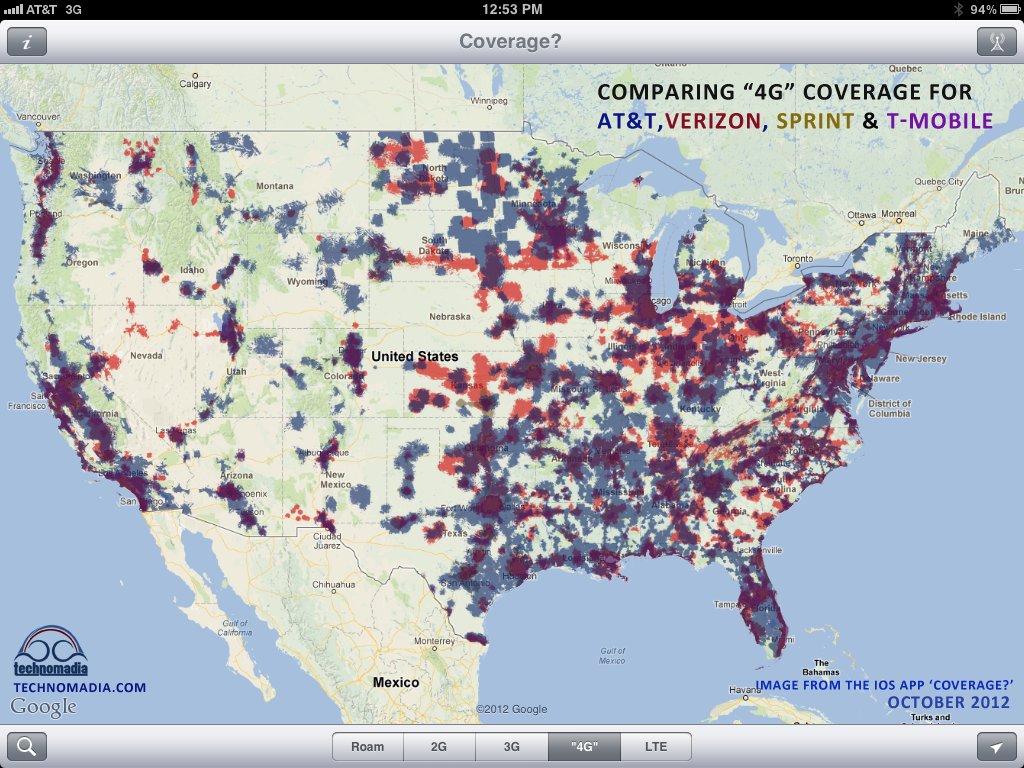
Seeing the ‘LTE’ writing on the wall, Sprint has stopped expanding its 4G WiMax network, and though they will keep it around for years buying a WiMax device now is foolish. Making up for lost time – Sprint has now started to roll out its own LTE network, but they are way behind both Verizon and AT&T.
T-Mobile is the only major US carrier that hasn’t started deploying LTE yet, but even T-Mobile has announced that they are on the verge of beginning to move to LTE as well.
Are we on the verge of grand-unified LTE nirvana?
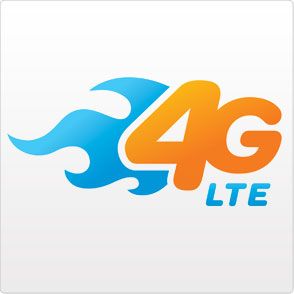
Not quite – the networking standards are converging to be at last the same, but the carriers own different and incompatible radio frequencies – and you can only fit so many different antennas into a smartphone. This is why there are still two distinct iPhone models – the Sprint / Verizon version can speak to legacy CDMA networks and talk to the Sprint and Verizon LTE frequency bands, while the AT&T iPhone 5 has different radio and antenna components that can only talk to AT&T’s incompatible LTE frequencies.
One other interesting twist – according to the International Telecommunications Union (ITU) HSPA+ and even LTE are not truly worthy of being called “4G” technologies, just evolutions of third generation technologies. According to the ITU, real 4G doesn’t come until the rollout of LTE-Advanced several years from now, when the networks are at last theoretically able to deliver gigabit (!!!) wireless speeds.
But regardless of whether or not the ITU considers it 4G, the marketeers have spoken – and both HSPA+ and LTE are being sold as 4G today.
Confused? Here’s a quick reference guide to the major carriers:
- Verizon: More crazy-fast LTE than any other carrier, and a HUGE but slow 3G coverage area.
- AT&T: A distant second when it comes to LTE coverage, but when you factor in the “4G” coverage areas AT&T actually has more “decently fast” coverage than Verizon.
- Sprint: A distant third in all ways, but Sprint is the only carrier offering unlimited data with no caps.
- T-Mobile: Way behind, and most of T-Mobile’s 3G / “4G” network uses frequencies incompatible with the iPhone. T-Mobile has started rolling out iPhone compatible HSPA+ frequencies, and promises soon to join everyone else in evolving to LTE.
If you actually want to visualize and overlay all of these competing coverage maps and technologies, there is honestly no better tool than our iPhone / iPad app ‘Coverage?‘.
The Ecstasy & Agony of 4G
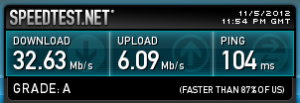
When you find yourself on an uncongested LTE network – it is an experience that can bring a bandwidth-hungry technomad tears of joy. Click, and pages open. Video plays without stuttering – even HD video. FaceTime video calls are almost like being there. Downloads are fast and painless.
At last, we have mobile data that is as fast as most people manage via their wired cable or DSL networks!
Even the upload speeds are fast!
But…
LTE may be as fast as a home network connection, but only during ideal circumstances. And those circumstances can vary moment by moment, occasionally eliciting squeals of frustration.

We’ve seen LTE speeds all over the map in our speed tests, sometimes seeing vastly different results just moments apart. LTE speeds vary depending on signal strength, atmospheric conditions, how many other users are on the same tower you are connected to and how much data is flowing upstream / downstream from that tower.
And it sometimes seems to even vary based upon the phases of the moon or the current hunger level of the cat – I just can’t prove it yet.
And with a swarm of iPhone 5 (the first iPhone with LTE) users starting to hit the nets, LTE networks are at risk of growing slower and more congested during peak times until the carriers have time to catch up with the flood of new demand.
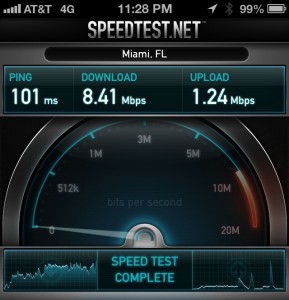
Our experience with Verizon’s LTE network has surprised us with just how inconsistent the performance can be – with speeds varying from a decent 5Mbs one moment, to a blazing fast 20Mbps the next. We’ve even seen sub-3G 1Mbps speeds on occasion while showing 5-bars of strong LTE signal. It can be maddening at times, honestly.
One thing in particular that we noticed was how often LTE upload speeds actually clocked in faster than download speeds, probably because of the disproportionate load with so many more users surfing and streaming content.
In contrast – AT&T’s “4G” network has often surprised us with how consistent and reliable it is. While it may not offer as many peaks of blazing LTE speeds, it offers more coverage than Verizon’s LTE and reasonable “good enough” speeds. We’ve had plenty of days where we actually end up preferring to switch our upstream connection to AT&T, even while in solid Verizon LTE territory.
We love having the ability to use whichever network works best at any given moment, and firmly stick with our recommendation that any technomad needing a near ‘always on’ connection rely on multiple networks for the greatest versatility.
But whether you are on Verizon or AT&T, the real agony of 4G/LTE is the limited data caps, and the constant threat of overage charges.
Read on for our top tips for maximizing not just data speed, but quantity…
20GB > 5GB = Millenicom Rocks
 Since connectivity is critically important to us, we have our iPhone’s on AT&T but use Verizon for our primary dedicated data connection.
Since connectivity is critically important to us, we have our iPhone’s on AT&T but use Verizon for our primary dedicated data connection.
But we are NOT Verizon customers.
Rather, we have signed up for Millenicom’s 4G Hotspot Plan, which is actually a Verizon LTE 4G MiFi in disguise.
It is not much of a disguise either – there is literally just a sticker covering over the Verizon logo on the modem.
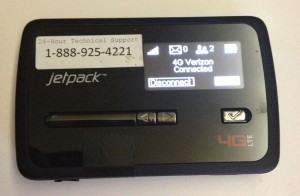
But because Millenicom buys bandwidth wholesale from Verizon and white-labels it – you get access to Verizon’s unrivaled LTE network (including 3G, 2G, and even roaming coverage!) without needing to sign a two year contract. And even better – you get 20GB of data for the same price that Verizon sells 5GB.
Here are the advantages of the Millenicom 4G Hotspot Plan:
- 20GB of data per month for $69.99.
- It’s on Verizon’s network, and Verizon is aggressively rolling out about 30 new LTE markets a month. The plan gets better all the time!
- No contract – it’s a month-to-month service. You can cancel at anytime. Or better yet, you can suspend service if you won’t need it (such as taking an overseas jaunt, or parking for a while with rocking WiFi) – for just $20 for a 3 month suspension.
- No extra fees. The price you see is the price you pay. It’s inclusive of all the taxes and communication surcharges. $69.99/month is exactly what we get charged each month.
- Never any overage charges, the cap is ‘soft’.
So what does a soft limit mean? If you exceed the 20GB limit, you only risk a slap on the wrist, not a surprise bill with a huge overage charge. This is the official word from Millenicom support:
“It is possible (though rare) that an account that goes over the 20 gig limit may be throttled to 3G speeds for 30 days (or in the event that usage is so egregious that it creates conflict with the upstream carrier, it may be necessary to close the account). Please note that, so far, none of our customers in 4G areas have been reduced to 3G speeds, they’ve received 4G speeds for their entire 20 gigabyte experience. Also, Millenicom never charges overage fees.”
It is a good thing that Millenicom does not have overage charges, since the only way to track your data usage is to email them and ask (the address is usage@millenicom.com, in case you’re curious). The lack of any way to easily track usage is the only Millenicom downside we have found, but they say they’re working on offering a login for customers to check directly.
To get the plan, you purchase directly from Millenicom – don’t go to a Verizon store to ask for this deal, they’ll look at you like you’re crazy! There is an initial cost to get started – namely purchasing the Novatel 4620L hotspot device from them and activating it. At last check, the total initial cost was $165, plus your pro-rated first month service charge. After that, $69.99 is billed to your credit card on the first of every month – simple and straightforward.
But the deal has just gotten even better. In a new partnership put together by the folks at WiFiRanger, if you buy your Millenicom plan through WiFiRanger you save on shipping an activation fees – bringing the initial cost down to $130 from $165. And WiFiRanger is offering discounted bundles if you buy their WiFi boosting system to go along with the Millenicom 4G modem.
All you need to add to complete our current favorite technomad wireless tech arsenal is a good signal booster, such as the Top Signal 55 3G booster and/or Wilson Sleek 4G booster which we’ve gotten from PowerfulSignal.
(Beware – when you go to Millenicom’s website, you’re going to be tempted by the “4G Unlimited Plan” offered for the same price, but don’t come back and ask us why not get that one instead? It does sound like a better deal afterall – unlimited is even more than 20GB! Here’s why we don’t recommend it – this plan is on Sprint’s network and uses a WiMax device. Re-read the above section about 4G network evolution if you don’t yet comprehend why that’s not a forward thinking choice. Additionally, Sprint’s network is pretty darn good when in urban areas and traveling most interstates. But outside of that, they are often roaming at annoyingly slow 2G speeds. If most your travels will be in urban areas and the current Sprint WiMax coverage map suits you fine, then this plan may be a good deal for you. Otherwise, avoid it!)
Share Everything
Our next tip for maximizing data usage is to throw it in a pool and share it.
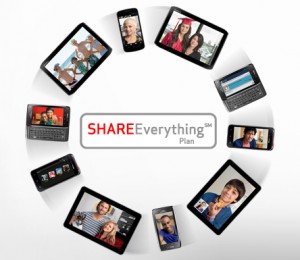 Verizon’s “Share Everything” plan and AT&T’s “Mobile Share” plans let you have up to 10 devices sharing a single pool of data, with unlimited voice and text messaging thrown in for good measure.
Verizon’s “Share Everything” plan and AT&T’s “Mobile Share” plans let you have up to 10 devices sharing a single pool of data, with unlimited voice and text messaging thrown in for good measure.
These plans aren’t such a good deal for a single person, but once you start adding devices this is a great way for a technology-equipped family to maximize their data. Especially if you throw a few minimal-data-consuming relatives onto the plan, the overall cost per user starts to look really good indeed.
Cherie and I recently at last took the big relationship step and merged our separate phone plans under a single AT&T shared plan. The plan we went with gives us 10GB of data for $120/month, plus connection charges of $30/mo for each of our phones and $10/mo for one connected iPad. Overages are $15/gig.
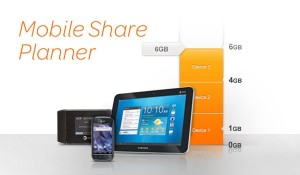 We like this setup because it keeps us connected via our iGadgets while on the go, and we can get our laptops online when needed by enabling the “Personal Hotspot” feature that turns our iPhones into WiFi hotspots. We used to have to call AT&T to consciously activate the extra $20/mo hotspot feature on a single device when we needed it (and call again to deactivate it when we didn’t), which was such a hassle we were always hesitant to do so. Now, it’s just always there – so we use the AT&T data whenever our primary Verizon connection feels sluggish.
We like this setup because it keeps us connected via our iGadgets while on the go, and we can get our laptops online when needed by enabling the “Personal Hotspot” feature that turns our iPhones into WiFi hotspots. We used to have to call AT&T to consciously activate the extra $20/mo hotspot feature on a single device when we needed it (and call again to deactivate it when we didn’t), which was such a hassle we were always hesitant to do so. Now, it’s just always there – so we use the AT&T data whenever our primary Verizon connection feels sluggish.
And overall it doesn’t cost much more than our individual plans had before – we were paying close to $180/month even when the hotspot feature was turned off. But this plan gives us so much more flexibility.
And the iPhone on AT&T supports simultaneous voice and data, so we can talk and be online at the same time – meaning that we can actually use the iPhone as our primary home connection when Verizon coverage is lacking. (Some Android phones can do simultaneous voice and data on Verizon, but the Verizon iPhone can not.)
Pro Tip: AT&T’s ass-backward billing system can’t join phone numbers from different area codes into a shared plan, unless you first transfer those phone numbers over to a business plan – which costs the same. We had to do this to get my California and Cherie’s Florida number onto the same plan, and it was a time suck of a project to navigate AT&T’s very archaic system to get our business set up with them. Verizon reportedly has no such hassles.
Free Lunch with FreedomPop??
In addition to Millenicom, there are several other MVNO’s (aka Mobile Virtual Network Operators) that do not own their own wireless networks, but which white-label and resell access to the big national networks. Virgin Mobile is one well known example, which resells Sprint’s network.
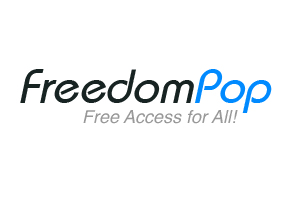 One MVNO that has generated a lot of buzz lately is FreedomPop, which is promising completely FREE 4G – all you have to do is buy a modem.
One MVNO that has generated a lot of buzz lately is FreedomPop, which is promising completely FREE 4G – all you have to do is buy a modem.
But of course, there is a catch…
First… The free data is limited to just 500MB a month, 1/40th of what you get from Millenicom for $70/month. At 4G speeds, that can be gone in a heartbeat. If you want more data you need to pay up, recruit friends to join too, or “complete offers”.
If annoying your friends in pyramid schemes is your sort of thing, have at it – we’ll skip however.
Worse – FreedomPop is based upon the same WiMax network that Sprint is evolving away from, which has very limited coverage that will not be increasing. Down the road FreedomPop intends to move to “selling” Sprint’s LTE network, but for now the coverage footprint is far from nomad friendly, and the current generation of modems will need to be replaced with LTE modems later.
There’s No Such Thing As a Free Lunch, afterall.
Truly Unlimited is Truly Limited
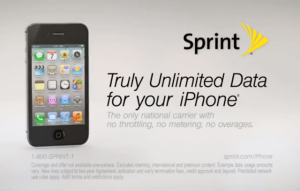
If you happen to live or travel to areas well served by Sprint – you can avoid the headaches of worrying about data overages and get a truly unlimited data plan.
Sprint is the only major carrier committed to offering unlimited data, even on its LTE network!
But… Technomads tend not to be in one place for long, and Sprint’s WiMax and LTE coverage areas are extremely limited. And the EVDO speeds you fall back to when roaming the rest of the country are frustratingly slow.
And much of Sprint’s broader nationwide coverage is actually ‘roaming’ – and when you are roaming the fine-print kicks in, and the “unlimited” plans suddenly come with very limiting data caps.
We actually first switched to Millenicom after getting completely cut off by Sprint for exceeding our 300MB (yes, MB!) data roaming cap.
So we’ll say it again – be careful before you get tempted by Millenicom’s 3G/4G Unlimited Plan – it is actually Sprint. Only Millenicom’s 20GB 3G/4G Hotspot Plan and 3G Advanced Plan are on Verizon’s network. And Millenicom’s Basic Plan is actually on T-Mobile, so watch out!
Is there such a thing as too fast?!?
If you have an unmetered allotment of infinite usable data, there is no such thing as ‘too fast’. Bring on the speed!

But… unmetered wireless data is exceedingly rare. More commonly people are on 5GB/mo plans or less. Even the awesome Millenicom plan we recommend only comes with 20GB of data.
And if you have limited data, too much speed can actually hurt you.
How? Consider the common situation of watching an online video:
- On a slow connection, when you click on a YouTube page, it may take a few moments for the video to start to play – and it may even stop and stutter a few times as the caching catches up with your viewing. After a minute or two if you grow tired of watching Gangnam Style for the fiftieth time, you click away with only a few dozen excess megabytes having cached in the background. You have watched pretty much every byte you downloaded.
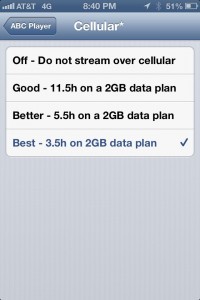
- But on a 4G connection, even if you only watch a few seconds of a video, by the time that you click away the whole video has very likely already been downloaded and cached in the background. Even if you don’t watch the video, you’ve expended the data it took to download it.
Especially if you are playing back in HD quality (which some sites might default to automatically if they detect you are on a fast connection!), a brief procrastination break surfing through Nyan Cat Remixs or browsing the latest movie trailers can suck your monthly data rations dry.
A 2 minute movie trailer can burn as much as 100-200MB in HD, even if the trailer is so awful that you click away after only watching the first few seconds! Imagine how much a full episode of your favorite TV show might be?
The same applies to other big downloads, like software updates or iTunes video purchases.
Even if you avoid YouTube’s rainbow farting pop tart cats and crazy dancing Korean guys – there are plenty of other ways that speed can hurt you. Here is another example:
- You get a prompt that an application or your operation system has an update ready. On a slow connection you’ll see something with an multi-hour estimated download time. When we see that, we cancel the download and seek out faster and less annoying WiFi. We don’t have 4 hours of our time to waste to get a software update!
- But on a fast 4G connection, that download will give you an estimate of a few dozen minutes. This is tolerable enough that you might not even realize you just quickly consumed a 1/5th of your monthly allotment in under 20 minutes!
4G mobile internet speeds can be exhilarating, but if you are going to surf fast .. surf smart. Keep careful track of your data usage or risk a nasty overage charge.
And it is easy to let the speed get away from you – recently we checked in with Millenicom to check on our usage, and were shocked to discover we had used over 20GB in just two weeks! We had to go on strict data rationing to make it through the rest of the month without them threatening to cancel us! (Thank goodness for our AT&T fallback!)
Novatel 4620L Issues
When we first tried Verizon’s 4G last year on Millenicom, the Samsung SCH-L11 mobile hotspot offered at the time proved to be an absolutely frustrating piece of tech-garbage that would constantly disconnect and lock up. We sent it back, and gave up on 4G for the time being.
The currently offered Novatel MiFi 4620L Hotspot is vastly superior in every way, but it does have some serious issues as well.
The worst had us pulling out our hair for weeks on end – sometimes the 4620 would seemingly lose its mind. One of us would be online surfing fine and fast, but the other would be seeing page loads take minutes before stalling out without even finishing loading. This vastly different user experience might even happen when we were both surfing the same site. Reseting the modem would fix it for a while, but the more heavily we used it, the more often the modem would behave increasingly erratically.
I didn’t know whether to blame Verizon, Millenicom, Novatel, Apple, or perhaps some strange wireless interference in our bus. Speedtests would alternate between 13Mbps one moment, and 0.13Mbps the next. But then I discovered that if I turned off “Enable Logs” (which I had turned on for debugging purposes, ironically!) in the Advanced / Settings page of the routers control panel, suddenly everything began to work fine. It was miraculous, and maddening. Novatel very clearly has some serious bugs in their logging code!
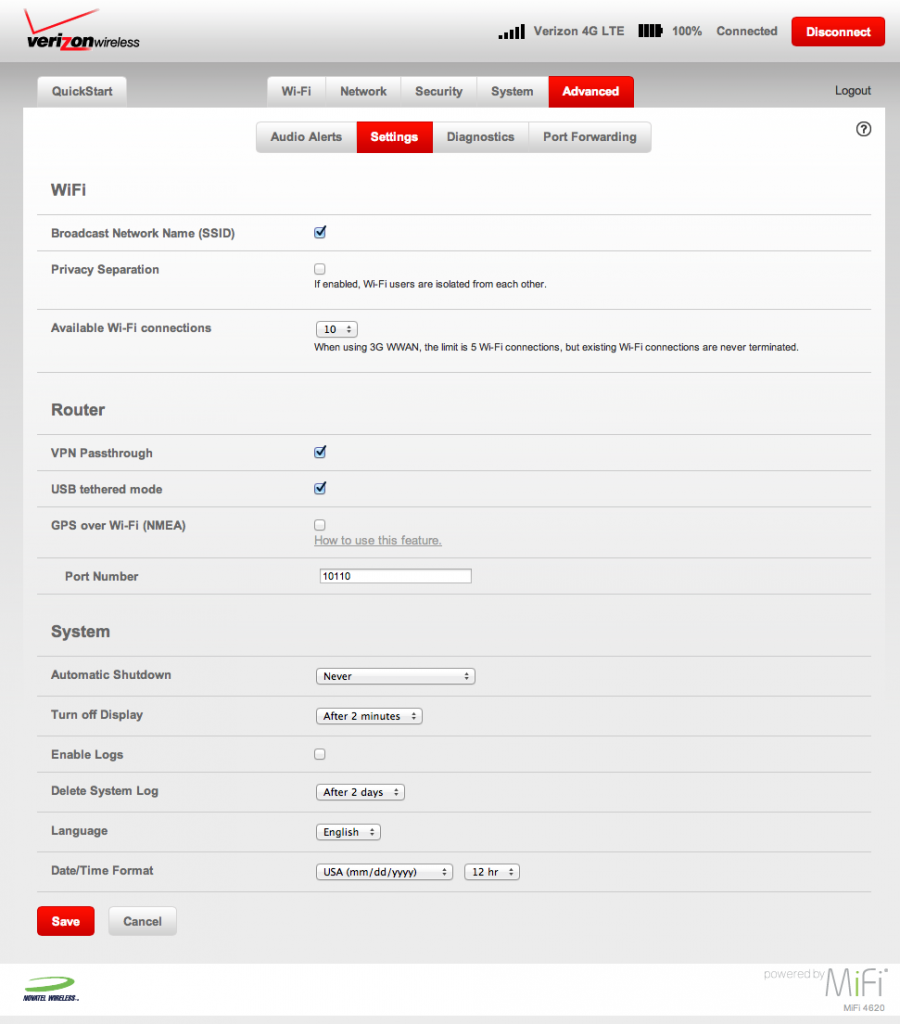
Another issue that I haven’t been able to find a workaround for yet is that the 4620L seems to occasionally get overloaded if you try to open too many pages at once – such as restarting a browser and restoring a dozen or so tabs. Some of them will fail to load the first time until you click the browser’s “reload” button.
Sometimes even single pages need a “reload” to fully load completely – and it is definitely the 4620L at fault for dropping some of the threads of connection.
The other maddening issue with the 4620L – I discovered a very bizarre issue that actually prevents the 4620L from being able to see some websites entirely, as discussed in this Verizon support thread. For example – I can’t see the RV TV antenna manufacturer Winegard at all while connected via the 4620L, but I can just fine when surfing via AT&T. This blocking seems to be rather rare, but it is disturbing.
Yet another issue — the 4620L is powered via a micro-USB cable, and can be charged by plugging it into a computer. But under heavy use (especially while uploading) a USB port can fail to provide enough power to keep up with the modem, meaning that even while plugged in you can end up with the modem shutting down after a few hours due to “low battery”. Very annoying if that happens just as you’re finishing a massive upload!
The final annoyance with the 4620L is the ridiculously bright flashing green LED that pulses continuously, turning our bus at night into a roller disco if we forgot to drape something over it. I don’t understand why so many tech manufacturers insist on sticking needlessly bright and essentially useless blinken lights on their gear.
Fortunately this is fixable with a bit of black electrical tape.
Overall the Novatel 4620L isn’t that great of a device – it is buggy and has more issues than I care to count. Verizon last month even issued a “mandatory firmware update” that was supposed to open the door for later fixes to be installed – but the firmware update for the vast majority of people fails to install. So now Verizon and Novatel are promising that by the end October they will have re-issued the fix that will then allow them to eventually issue other fixes. Geesh!
(And no surprise: the end of October has passed with no update yet!)
If only more device makers focused on rock solid stability instead of going for the lowest price or the longest feature list!!
Our recommendation: While the 4620L may not be great, it is ‘good enough, for now’ – combined with Millenicom, there aren’t any better alternatives that I’ve discovered.
WiFi vs USB Tethered Mode
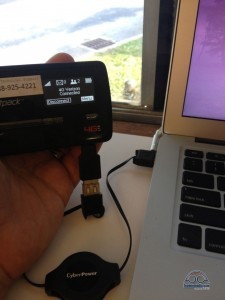
The whole point of a MiFi-style mobile HotSpot like the 4620L is to take a 3G or 4G wireless connection and create from it a WiFi hotspot that lets multiple devices online at once. But…
The 2.5GHz WiFi spectrum is an overcrowded mess – with not just other WiFi devices jockeying to use the three unique channels located in the 2.5GHz band, but also bluetooth headsets and keyboards, cordless phones, and even microwave ovens all broadcasting on the same narrow slice of unregulated frequency! In crowded convention centers mobile hotspots can actually end up becoming literally useless – there are just too many devices trying to share the same slice of spectrum that in the end no one is able to surf on 2.5GHz WiFi at all.
And I’ve yet to see a mobile hotspot (or mobile router) that supports the uncongested 5GHz WiFi bands.
One way to avoid all this gridlock is to enable “USB Tethered Mode” in the 4620L’s Advanced / Settings control panel, and then connect to it via USB instead of WiFi. Unfortunately, Millenicom does not ship the needed micro-USB cable with the device, so you’ll need to acquire one on your own.
With tethering enabled, you can plug the 4620L directly into your laptop via USB and get online without any WiFi interference or slowdowns.
And the new soon-to-be-released firmware for the WiFiRanger routers will support this tethering mode as well, allowing the 4620L to be paired directly with and to charge straight from the WiFiRanger.
Once this new WiFiRanger firmware is released and stable, the 4620L / WiFiRanger will make for an awesome combo.
If You Live In a Box, You Need a Boost
Most RV’s have flimsy walls made of fiberboard or fiberglass (finally, an advantage over buses!) – but for those of us who live in a metal box like a bus, signal boosting and an external antenna is not just nice to have, it becomes absolutely critical.
Unfortunately – 4G LTE frequencies are different and not compatible with our current Top Signal 55 3G Booster, and there are very few 4G signal boosters on the market yet.
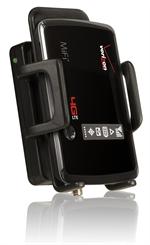
Powerful Signal sent us a Wilson Sleek 4G – Verizon to test, and it has proven to be incredibly useful for getting a workable 4G signal to the 4620L without needing to constantly audition which bus window has the best signal to set the modem in.
But while the Sleek 4G also boosts 3G signals, overall it doesn’t seem to work nearly as well as the Top Signal in fringe areas, and it doesn’t broadcast to multiple devices inside the bus – only boosting whatever is in the cradle.
And the Sleek-4G comes in different versions for supporting Verizon and AT&T’s LTE networks – there is no universal booster.
The Top Signal on the other hand is 3G only.
The lack of a clear “top” choice has resulted in a bit of hassle needing to shuffle antennas and boosters around to find the ideal setup at any given place.
Our booster recommendation: If you’re starting from scratch, we don’t envy the current options in front of you – because more universal options are hopefully just around the corner. If you can, we recommend waiting to see what the offerings are in a few months. If you can’t, we’d probably recommend getting a Sleek 4G if you’re going to be in 4G areas. If you’re planning to be in lots of non-4G areas, then it may make sense to get a system like our Top Signal. In either case, have plans to upgrade once more robust booster solutions hit the market.
WiFiRanger – Go or No Go?
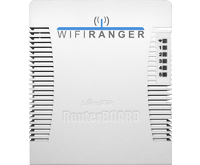 In addition to testing out 4G connectivity options, we’ve also been trying out the latest WiFiRanger wireless router – the WiFiRanger Go.
In addition to testing out 4G connectivity options, we’ve also been trying out the latest WiFiRanger wireless router – the WiFiRanger Go.
In theory the Go acts as the perfect hub for all our connectivity options. The Go creates its own wired ethernet and wireless WiFi hotpsot that all of our devices connect to.
Upstream, the Go is smart enough to connect to local free WiFi if any is in range, and this range can be pretty far if the Go is paired with a roof-mounted extended-range WiFi access point. If there is no WiFi available, the Go will then try connecting via a cellular data card, or you can tell it to connect to a 4G Hotspot like the 4620L MiFi or an iPhone in Personal Hotspot mode.
In theory, it is magic, requiring only the barest of manual intervention.
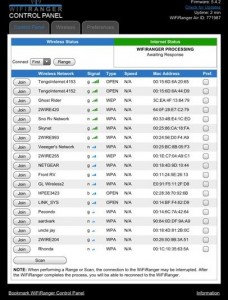
In practice, the WiFiRanger control panel software has been struggling to get out of a “beta” state, and the numerous issues and bugs we’ve encountered have given us plenty of headaches.
The biggest issue is that the Go isn’t stable enough to configure and forget about. Every three or four days it needs to be rebooted by powering it off/on.
If you open the WiFiRanger control panel in your web browser and leave it open, whatever internal memory leak is at work accelerates – and you may end up with a locked up router in a matter of hours instead of days. We’ve learned from experience to always close the browser window after making any WiFiRanger adjustments.
We’ve also learned not to use Apple’s wireless AirPlay streaming from our laptops to our TV on our local network via the Go – this flood of traffic instantly crashes the router.
Another issue that we discovered is that the MiFi and the WiFiRanger suffered being wirelessly paired in close proximity to each other – the resultant WiFi interference slowed things down substantially. To avoid this, we ended up keeping the MiFi in the front of the bus and the WiFiRanger in our tech cabinet – an awkward arrangement instead of keeping our wireless gear neatly in one place. In theory the next release of the WiFiRanger firmware will allow USB instead of wireless connection to the MiFi – eliminating this issue.
The issues with the Go have had us more often than not revert to connecting our laptops directly to the MiFi when we’ve needed to get online and have not needed the WiFiRanger’s WiFi boosting capabilities.
But we know that WiFiRanger is aware of and working on these issues, and the firmware keeps getting better and more stable with each release. The support we have gotten from WiFiRanger has so far been superb, and even with all the issues we’ve encountered I am not aware of any better overall alternative.
Hopefully in the near future we’ll be able to go from tentatively endorsing WiFiRanger to considering them a rock-stable part of our technology connectivity arsenal.
Our recommendation: If you’re a bit techy, patient and willing to be a paying beta tester, go ahead and get the WiFiRanger Go now – it’s mostly there. If you’re not tech-saavy or patient, hold off until it stabilizes. Hopefully that’s not too far off from now.
4G – It’s Worth It
If you’ve been keeping track, you’ve certainly noticed that we have a lot of wireless connectivity options, and indeed we pay a lot for it.
In summary:
- AT&T 10GB ($120) Shared Data Plan, 2x iPhones ($60), 1x iPad ($10) — $190/mo
- AT&T Grandfathered Unlimited iPad Plan — $30/mo
- Millenicom Verizon 20GB 4G LTE Hotspot Plan — $70/mo
Nearly $300 a month for mobile connectivity!
But considering how central this is to our technomadic lifestyle to keep working as we roam, and how few other bills and expenses we have, it seems downright reasonable of an expense for the two of us. These three plans give us a healthy 30GB/mo of data (plus unlimited video watching on the grandfathered iPad!) spread across the two biggest and fastest wireless networks, so we have the best possible odds of always being able to find a decent signal – and the ability for us each to still get online if we need to travel independently.
If we needed to economize, without breaking a contract, we could drop our AT&T Mobile Share plan’s included bandwidth to lower levels. But after doing the math – the 10GB plan makes the most sense for us right now.
If we knew we wouldn’t need it for a while (staying someplace with great WiFi for example), we could cancel or suspend our Millenicom account and save $70/mo.
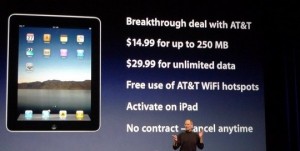
We’d be hard pressed to cancel our AT&T grandfathered unlimited iPad data plan though unless we were in really dire straights, even though there is no contract. This $30/mo plan was offered for only a few months when the original iPad was first launched, and it is an outrageously good deal considering that this gives us truly unlimited and unthrottled AT&T data. That $30/mo would only buy a 3GB iPad data plan now – and if we were to ever cancel it we could never get it back.
This plan can even take advantage of AT&T LTE speeds (once our AT&T LTE-capable iPad Mini arrives later this month), but it does not allow for cellular FaceTime video calling, nor can we use it to create a Personal Hotspot and share the connection with our other devices.
But it does allow us to stream unlimited video from Netflix, the ABC app, Hulu, and more. We use an HDMI adapter to connect the iPad to the TV in our bedroom, and this iPad becomes our primary media consumption device – all without any worry of running into data caps. AT&T’s 3G/4G network streams exceptionally well.
If you ever have a chance to acquire an iPad that still has this plan activated, do it! (They sell for a small fortune when they come up on eBay!)
Conclusion
The headaches we’ve experienced going 4G are no worse than the ones we’ve struggled with over the years trying different 3G solutions, but when you have everything working happily – the end result is incredible. Mobile internet has come a long way since when we first hit the road and thought it a stellar day to be surfing at intermittent 2G speeds.
Mobile data at last truly can rival home Internet speeds! My head still spins contemplating it!
We live in the future – and it just keeps getting better. The time for going 4G is here.
Now all we need are some vastly increased (or eliminated) data caps!!!
Got Questions? Join Us
BTW – since the last one went so well, we’ll be using some of our unlimited iPad data to do another live UStream video chat this Thursday (TOMORROW – November 8th) at 9PM EST. If you’d like to pick our brains about 4G , mobile tech or anything else technomadic, join us here!


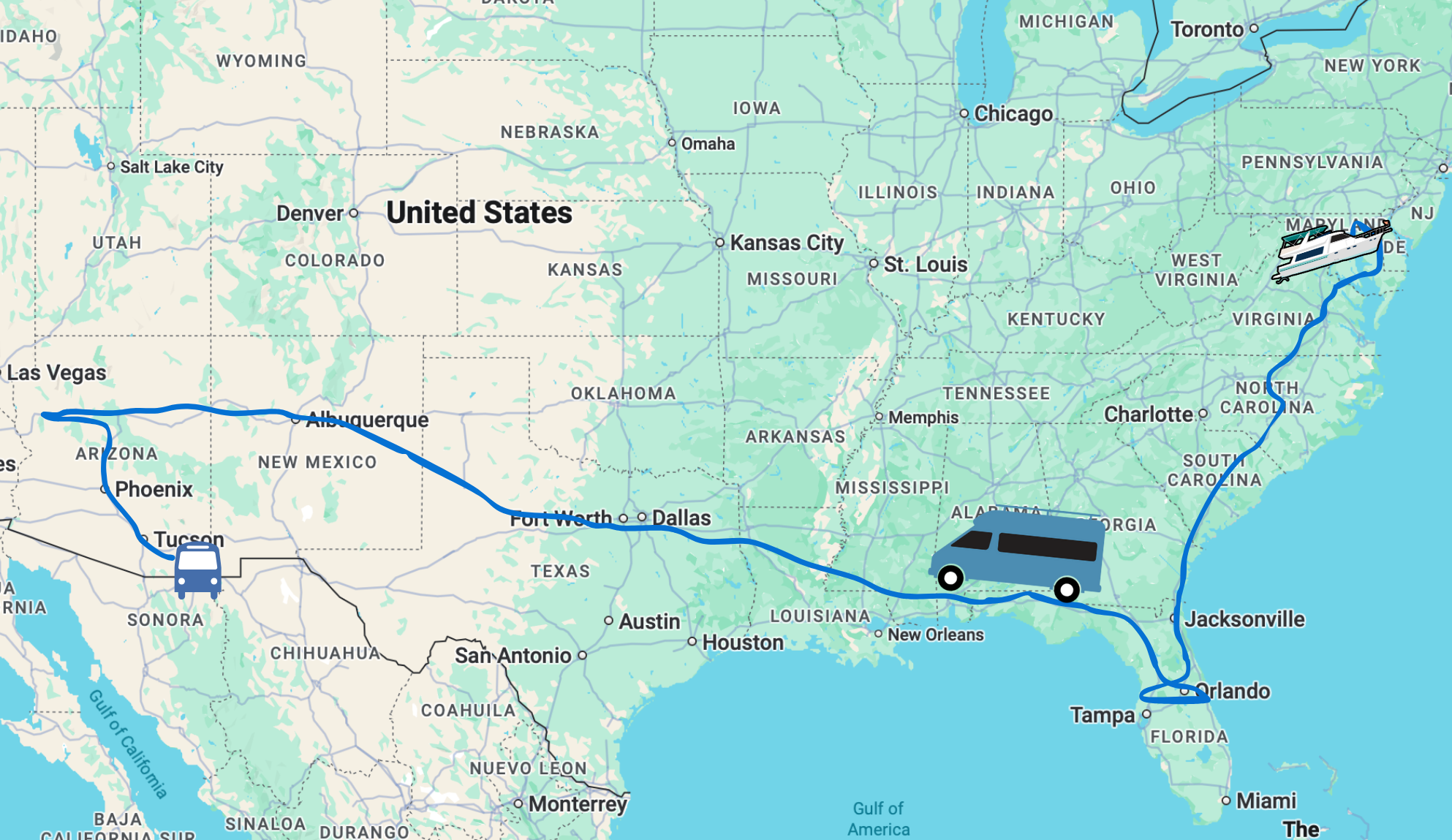
My first time here and I thank you for your information and I’m hoping to begin my first RVing adventures in just a few weeks (yeah!) and this is a big issue to finalize – keeping connected via wireless internet on the road. However, I have what I hope is a simple question. I currently have unlimited data with Verzion and they say I can use my cell phone for my own wifi hotspot in order to use my laptop wirelessly. Do I really then need to have/consider all the options you have laid out or, knowing I will have some limitations on the road, am I really to head out? I’ve an iphone 4s but looking to upgrade to the galaxy 3s for faster speeds.
Thanks so much!
Thank much-
Welcome – it all really comes down to your needs be travel style. Verizon is great, but certainly far from perfect. Our new book – The Mobile Internet Handbook was written specifically to help folks figure out what they really need. https://www.technomadia.com/Internet
One other quick thing — I strongly recommend against buying older model phones, especially Android phones.
The Galaxy S3 is well over a year old, and unlike Apple, Samsung has a very bad track record for providing updates for older phones over time.
Apple’s new iOS7 was just released and it still supports all the way back to the iPhone 4 (which is well over three years old now!), but most older Android devices will never get a major OS update, and many will not even get critical security updates.
If you do want to go Galaxy (they are nice phones in many ways), make sure you get the latest — currently the Galaxy S4.
– Chris
We are getting ready to take our kids full time on the road. My husband and I both work from home (RV? :P) and internet is crucial. Plus, we have a competitive gamer and another kiddo who’s main means of keeping in contact with his friends will be his XBox. I was looking at Millenicom’s website and they offer a third option that you didn’t mention in your article. Perhaps it wasn’t available when this was written. It’s BYOD (Bring Your Own Device) plan and has unlimited data. Do you know anything about this? Is it also actually Sprint, or could it be worth looking into? Thanks for this great article, you answered a lot of questions for me!
Ah yes, that is a new offering (they’re always changing things up). In the past, when they offered a BYOD plan, it was on Sprint. By the looks of it, this seems to be as well.
Since we wrote this article, Sprint has started deploying more LTE fairly rapidly, and Millenicom now includes LTE in their plans. So, that does potentially change things a bit.
So, if Sprint is deploying LTE rapidly now, is that a game changer for them? Would you recommend using them for our circumstances? Thanks for replying!
We’re keeping an eye on them ourselves. If you need unlimited bandwidth and you’ll be mostly traveling in urban areas, Sprint may be a viable solution.
Cherie
Great post. Just reading it. We have the Novotel 4620 with external antenna. Helps the mifi signal but we seem to be having a lot of interference within the RV. In other words, I see a good Rssi on tHe mifi but cannot connect inside RV with iGadgets or Mac Book air.
When I take outside, like right now, I can connect with iPad.
Is this the 5 ghz interference about which you speak?
We are now full timing ( currently just north of you in Nehalem Bay).
Would the wifi ranger help? Which one?
Thanks.
I am a bit confused as to the issue you are describing – are you saying that you are unable to connect to the MiFi with your laptop when inside your RV, but it works outside? Are you even having issues connecting when the MiFi is right next to your laptop?
Have you tried using USB tethering to connect?
The 2.5GHz interference might prevent a connection while you are in the midst of microwaving something, but it usually only slows down a connection – not block it entirely.
It sounds to me like you might have something else wrong. You may want to contact technical support from the company that sold you the MiFi to troubleshoot further.
Good luck!
– Chris
Hi Chris,
Thanks for the great write up. We’re trying to sort out our connectivity. Right now we have AT&T Shared Data Plan with iPhone4s that we use as hotspots for our iPads and MacBook. We’re at 15GB and it’s pretty minimal for us. We’ve been at a rural park that has had free WiFi, but it’s never been fast and is getting worse. And we’re starting to travel again. When we were on the road before we had a DataStorm system (circa 2005), but that seems to be passÁ© nowadays. Reading the DataStorm forum, even the DataStorm old-timers often seem to be using WiFi and cellular for their connectivity. You mentioned in a different post that you also have a tripod satellite internet system. How often do you deploy it?
Hi Larry –
Thanks for chiming in. We’ve not deployed our tripod sat dish since.. um… let’s see… August of 2011. But keep in mind, since then we’ve been primarily based on the east coast, where cellular service is abundant. We’re about to start heading westward, so we’ll see if we feel the need to re-activate the account.
Hello, I wanted your opinion about Millenicom. I recently signed up with Verizon for my cell service and each month I am upping my data allowance. If I add millenicom for my internet I would drop my excess data to 2gb which would save me $20 / mo. but in exchange I’d be getting a more realistic data limit for my needs. I currently have 6gb / mo. and close to maxxing out in less than 2 weeks. I wonder what you think about purchasing the uml290 in addition to the mifi you are required to buy. It has received good reviews and would fit my needs. http://www.pcmag.com/article2/0,2817,2383397,00.asp
We love Millenicom, and highly recommend them – as noted, we use their Verizon plan as our primary internet access on the road. Don’t know anything about the UML290, or if you’d be able to transfer Millinecom Verizon service to it or not. We just use the 4620 MiFi device that comes with the plan. If you’re successful with it, let us know.
thanks for the reply, I’ll check posts here occasionally to see if anyone has tried.
I am planning on going mobile soon and this was a great deal of help. I do have a question for you though. I haven’t noticed anywhere that you mention a way to monitor your data usage before you go mobile. I need a way to determine how much data I move on a monthly basis. I do move many GB (databases mostly) but try to move them between sites and an online storage location to keep my local data transfer down.
I can’t really go by my household usage (not that I can get my provider to give that to me anyway) because my wife works from home and my children are huge data consumers as well.
Is there something that I can use on my computer that tells me straight out ‘You uploaded 25 GB and downloaded 35 GB this month’? Don’t want to get on the road and find out that I’ve used up my allotted data the first week!
Thanks for all of the great information.
Hi Tim —
There are plenty of utilities (for both Mac and Windows) that monitor your usage and network traffic on a single machine, but it can get tricky sorting out the traffic on your local network vs stuff heading out on the wire. I do think some of these have gotten pretty smart though.
I haven’t researched any of these options in a while since we have been more concerned about combined usage (including of iGadgets), but if you find any favorites feel free to report back here.
Good luck!
– Chris
Thanks for all the great info! We recently purchased the mifi and plan through WifiRanger. My only complaint is that that require you to activate your service before they actually ship the unit.
Activation requires a phone call, which is an annoyance, albeit a minor one. More annoying is scheduling your order date, returning/receiving the call (which comes a couple of days after you place your order), the activation date, ship date (potentially the next business day after you activate the service) and delivery date. The small discount WifiRanger offers on the hardware is often offset by paying for service while the hardware is being shipped if you don’t time everything just right.
Thanks for the info, Gray – we didn’t know the specifics of how the WFR/Millenicom arrangement was happening.
However, you’re saving $35 in activation fees going this route. Your timing would have to be off by 2 weeks for the ‘small’ discount to be completely offset with unused service fees.
Great post – been waiting on this!
Wow. That’s a lot of info! We’re just barely happy with our setup (the unlimited Millenicom on Sprint) but it’s slow enough to have me reading this at 4am. We may pull the plug and go for that 4g. I’ll have to read again and ponder. Thanks for sharing!
Great article and information….and thanks for sharing it.. I am hoping when all my contracts are up to be able to use this information…even a non techie like me 🙂
Thanks for the detailed update. I’ve been trying to tell myself to upgrade to 4G for the last few months and just haven’t gotten around to it. I think I’ll order something tomorrow and get going.
Thanks for all the time you put into this post which helps so many of us! You answered the question I had regarding the “low battery” issue I’ve been having when I plug it into our inverter while on the move. And interestingly enough my 4620 device actually says Verizon on it…no white label covering it. I have a Wilson Sleek Booster I bought in 2010 and am wondering if that is the same as the one you are speaking about – I bought it for my iPhone but the receipt says “…for all Cell phones”.
Hi Debby –
No, the booster you bought in 2010 would be their prior model, which supports 3G and under. The 4G Sleek model just came out over the summer. It’ll work fine for boosting when you’re on 3G with your 4620, but won’t be anything more than an expensive holder when you’re using 4G.
It was Millenicom support that suggested the myverizon signup. That has been quite some time ago, so perhaps things have changed. Meanwhile, it’s nice not to have to e-mail Millenicom. I use my device in a router as well, and would really rather not ever use the VZAccess software. Nina, thanks for that thread; I was wondering how people with a MiFi could receive the text message. Perhaps there are other ways, too.
Great post Cherie and Chris. Very helpful. Thanks.
Great article Chris and thanks for putting in the time and testing. Lots of great stuff here. I’m sure I’ll be referring back to it often.
Chris and Cherie,
I don’t know if this will work with your Millenicom 3G/4G Novatel 4620L MiFi, but it may be worth a try. I use their 3G Advanced Plan device, the Novatel U760. I wanted to be able to get my data usage online, rather than having to e-mail Millenicom each time and wait until they responded.
So I signed up online on myverizon.com with a new user ID (not my previous User ID, which I had used with my Verizon iPhone). In the User ID field, I input the phone number of my device (no dashes). Then I registered for a new account. Verizon then sent a text message to my Novatel U760 device containing a temporary password. In order to read the text message, I had to fire up that crummy VZAccess Manager software and have the device directly connected via USB to the computer. I then could go to myverizon.com and sign on using the password in the text message. Then I could set whatever password I wanted. I can now get data usage stats whenever I want on myverizon.com as well.
Hope this works for you and will help others as well.
–Jan Forseth
When we had the Advanced Plan with the U760 I was able to see usage directly from within the VZAccess Manager software – but since we rarely had the U760 plugged in to our laptops (we kept it plugged into the WiFiRanger) and since that software was buggy and unstable, we rarely used it.
I do know that the VZAccess Manager software does not support MiFi devices – so you can’t use it to check usage directly in this way.
We’ve heard second-hand that Millenicom strongly discourages people from signing up with Verizon in the way you describe to check usage online via Verizon. And since the VZAccess Manager doesn’t work with the MiFi, I’m not sure you’ll be able to receive a text message to sign up in the way you describe working with the U760.
But – good tip, for those willing to experiment with it.
If anyone has a more official word from Millenicom about whether or not this is a bad idea, we’d love to here it.
– Chris
When I asked Millenicom about signing up to Verizon to access usage data I got the same reply -> that it’s strongly discouraged.
Now given all this I gather that MiFi usage *can* be monitored via the online VZ manager, but you need to remove the SIM and find somewhere else for it to receive the activation text message from Verizon. It’s a bit of a work-around…and like I said not recommended by Millenicom. Still if you’re interested there’s a thread on it here:
http://www.rvnetwork.com/index.php?showtopic=99605
Nina
Awesome update Chris & Cherie!!! Thank You, Thank You, Thank You. I’ve got ?’s but I think if I re-read & re-read then make my list & check it twice b4 I ask… I’ll get it sorted out. About to pull the plug & order b4 Novembers end since our launch date is the day after Christmas & I’d like to work on any kinks b4 leaving. Hmmmm sure hoping like crazy that WiFi Ranger Go will be out of beta mode by then. I’d gladly beta test free for them but oh how I’d hate to pay for something b4 it’s full price worthy.
Hi Cindy –
The WiFiRanger Go itself is cheap enough and capable enough that it is worth investing in even as it stands today. The extra-powerful roof-mount companion modules on the other hand are very spendy though, but since they can be added on later they might be worth waiting on until the full system is solidly stable.
AWESOME update! I just re-did the link in my last post to point to this one instead of your previous 4G update. Great detail & information.
The ONLY other “annoying” thing I would add on the 4620L is that the antenna port connection is fairly poor. For those using an external, wired antenna/amp the connection is kinda loose. The port is tiny and the cord doesn’t “snap” into place (sometimes it will even drop out if you happen to accidently move the MiFi). The boosting works and it’s not a huge problem, but a little annoying.
Nina
Great tip about the antenna port – we haven’t tried it since the Sleek-4G doesn’t even have an option for directly connecting. I can imagine that being hugely frustrating, particularly if you have the 4620L tucked out of the way someplace.